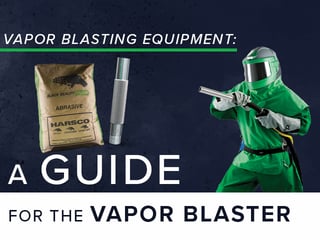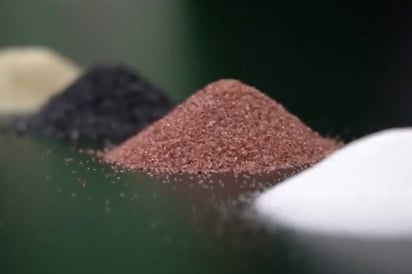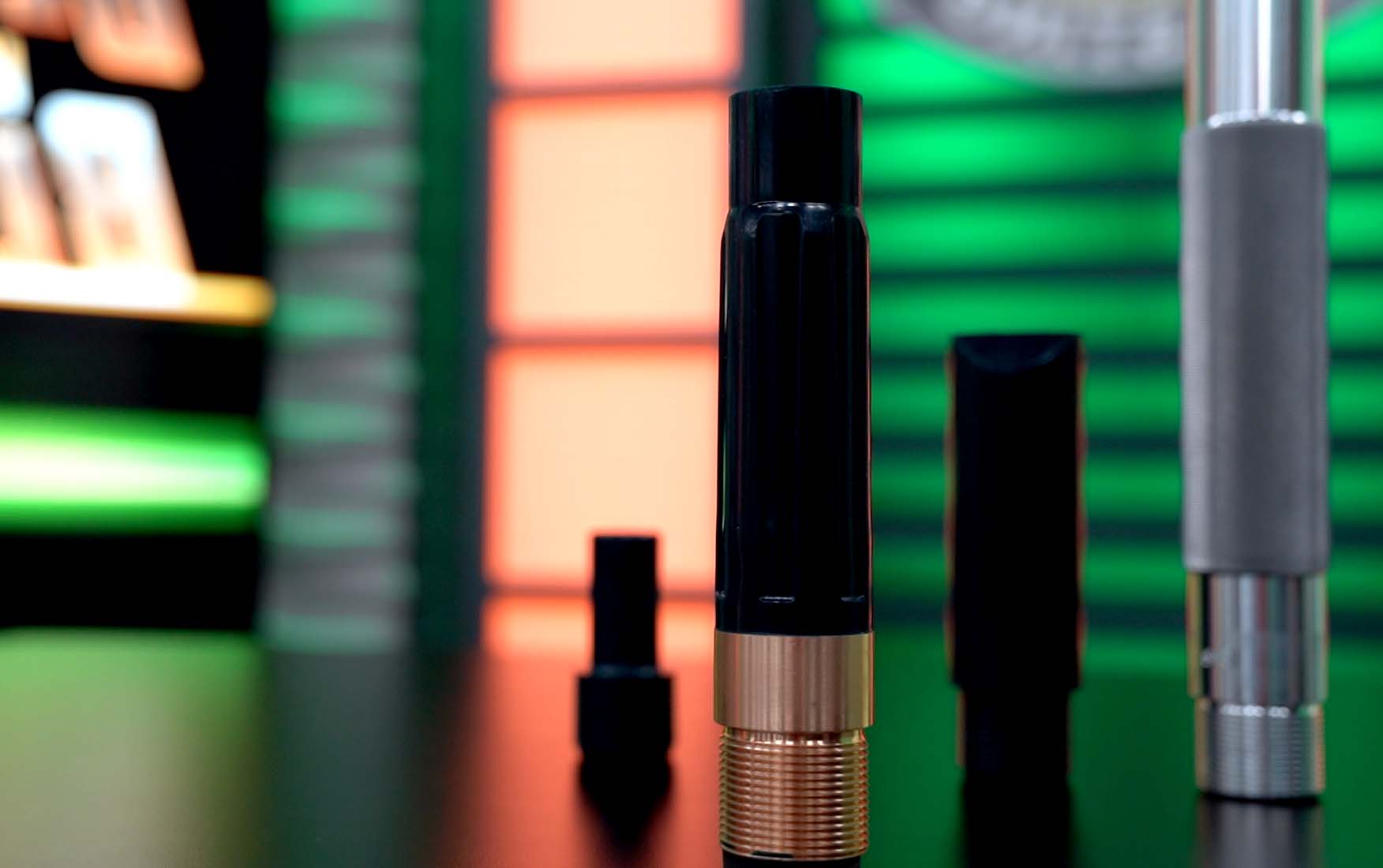Vapor Blasting Equipment: A Guide for the vapor blaster

Vapor Blasting Machine
Vapor blasting machines are used for cleaning and stripping coatings from a variety of surfaces. This equipment is similar to dry blasting except it's practically a dust free process that allows blasters to work in residential areas, ship yards, pristine locations or places that are highly regulated.
Vapor blasting equipment is different from traditional sandblasters in that they can simultaneously clean a surface and remove coatings in one simple step. How? By combining water and abrasive materials together in one simple step. However, not all wet blasting equipment is made the same. In this blog we'll go over the different types of vapor blasting equipment and how it's different from dry blasting.
View our ultimate vapor blasting guide here.
Different kinds of Wet Blasting Equipment
Vapor blasting is the process of using water and abrasive media to remove coatings from a surface with compressed air. However, there are various delivery methods that makes wet blasting equipment different from one another. The main difference between these vapor blasting machines is when and where the water and air is introduced. Below is a list of different delivery methods that vapor blasting machines use:
-
Dustless Blasting equipment (Venturi Suction): This method stores water and blast media inside the blast pot and uses compressed air to suck the mixture up and out of the machine. This technology helps to prevent clogging that you see with other wet blasting equipment.
-
Traditional Vapor Blasting/Vapor Honing Machines: Vapor honing machines use a gravity fed delivery system which is different from the vacuum effect of the Venturi technology. The vapor mixture is forced out of the chamber and then is pushed out by compressed air which is less efficient than the venturi method where the entire machine pressurized.
-
Slurry Blasting: This wet blasting process doesn't incorporate water inside the main blast pot, but instead introduces water at the nozzle. Vapor blasters aren't as efficient when using this vapor delivery method as water doesn't make contact with the media until the last step.
-
Vapor Blasting Cabinets: a method designed to contain the vapor blasting process within an enclosed workspace, preventing dust and wastewater from contaminating the surrounding area. This machine only allows for cleaning small parts.
Learn more about the differences of these wet blasting delivery methods in this blog post.
Wet Blasting Abrasive Media

Several factors go into choosing a media for vapor blasting: the coating, the surface, the desired results and the location. It's important to know that an operator cannot use the same abrasive for dry blasting and wet blasting. A wet blasting machine requires an abrasive that sinks in water. For a complete guide on how to choose a wet blasting media, view this blog post. Below is a list of commonly used wet blasting abrasives.
-
Aluminum oxide - a popular choice for its high hardness and durability, making it suitable for a wide range of applications.
-
Crushed Glass
 - free from crystalline silica and made from 100% recycled glass. This is an efficient abrasive that has an angular profile which is great for removing a wide variety of coatings from any surface.
- free from crystalline silica and made from 100% recycled glass. This is an efficient abrasive that has an angular profile which is great for removing a wide variety of coatings from any surface. -
Garnet -
 another popular choice of blast media for vapor blasting. It is a hard, dense material that is well-suited for removing heavier deposits of rust and corrosion.
another popular choice of blast media for vapor blasting. It is a hard, dense material that is well-suited for removing heavier deposits of rust and corrosion. -
Glass beads - a softer, more delicate abrasive that is often used for cleaning or achieving a smoother surface finish.
-
Plastic media - another gentle media used for cleaning delicate surfaces, such as aluminum and composites.
Water Source
While it technically doesn't fall under the umbrella of 'equipment', a water source is a necessary component of the vapor blasting process. Combining water with media helps to reduce dust, prevent warping and remove coatings faster than traditional dry blasting. Because the vapor honing process is close to dust-free, this method is highly attractive for contractors. When media is mixed with water, you're getting more velocity and impact out of the vapor mixture than you do with dry air.
As mentioned earlier, Dustless Blasting equipment mixes the water and abrasive inside the blast pot. All of our portable systems come with a water tank and pump that allows workers to add water to the blast pot in one simple step. This means you don't have to be connected to a water source for wet blasting.
Air Compressor
An air compressor is necessary to pressurize the vapor blasting machine and provide efficient operation. The size and power of the air compressor is selected based on the requirements of the wet blasting equipment. Every blast pot size has different CFM requirements.
Luckily, Dustless Blasting portable systems come with a blast pot and the required air compressor needed to operate efficiently - all mounted on a mobile trailer. Operators have easy access to everything needed for dry or wet blasting out in the field. These machines allow workers to provide a unique, high-demand service on site without compromising quality.
Dustless Blasting trailers come mounted with an air compressor.
Wet Blasting Accessories
Nozzles

The nozzle is the point of contact between the vapor blasting machine and the treated surface. It should be selected based on the specific application, the size of your compressor and media used. Some of the most important aspects to consider about your nozzle are:
Nozzle size
Nozzles are measured by their inner diameter, which is expressed as a number. The number size represents 1/16" increments. You must select a nozzle size that is appropriate for the volume of air your compressor can supply per minute (CFM). If you select a nozzle that is too big, you will lose blast pressure.
Nozzle shape
The shape of the nozzle will impact the vapor blasting pattern. For example, a fan nozzle produces a wide, thin blast pattern - designed for medium cleaning and stripping applications where a wide uniform pattern is required. This is different from a short venturi nozzle that delivers a tight stream of abrasive in a concentrated pattern - great for precision work and railings.
Nozzle material
Different nozzle materials have varying levels of durability and wear resistance. Harder materials such as tungsten carbide are often used for more aggressive applications, while softer materials such as ceramic are better suited for gentler surface treatments.
Personal protective equipment
Personal Protective Equipment, or PPE, is vital when vapor blasting or wet blasting. Some of the most critical forms of PPE are:
-
Eye protection - Safety goggles or a face shield are needed to prevent exposure to airborne abrasive media and water.
-
Hearing protection - Earplugs or earmuffs are needed protect against the loud noise produced by the blasting machine.
-
Hand protection - Shield your hands and forearms from abrasive materials with protection such as leather gloves. We recommend RPB Nova 3 Leather Blast Gloves that are engineered for rugged blasting applications.
-
Respiratory protection - Operators must wear a NIOSH certified respirator when dry blasting. However, we do recommend wearing one when wet blasting if you're working in a confined space or if you're unsure of what's in the coating you're removing.
Vapor Blasting Equipment Recap
If you're looking for a high-quality vapor blasting machine for your next cleaning or surface restoration job, consider switching to the Venturi-powered dustless blaster. Dustless Blasting machines come in various sizes that are great for a range of applications. Whether you're looking to add a system to your existing operation or offer a niche service, we've got what you need. View our products online or contact a wet blasting expert anytime! Below is our catalog with specs and pricing information.

.jpg)
